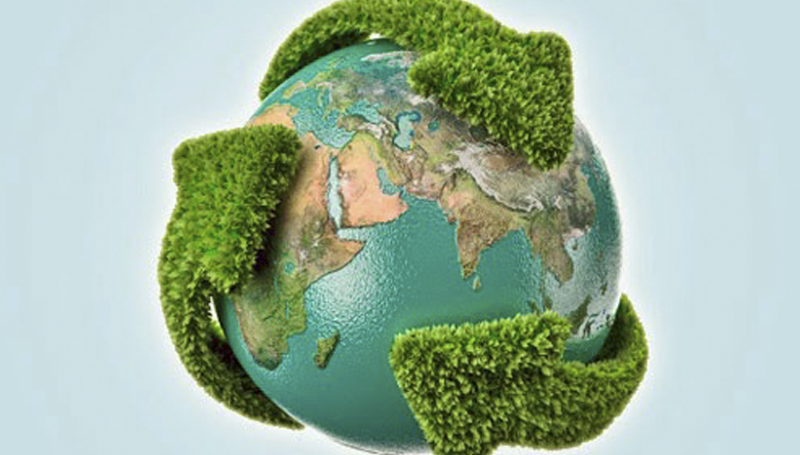Entrevista concedida pela FUNVERDE para a revista HM! sobre as malditas sacolas plásticas de uso…
Four crucial resources that may run out in your lifetime

Ecogizmo de 27 de agosto de 2009
Loz Blain
We’re living in lucky times. Living standards – in the Western world, at least – are the highest in history. It’s an era of relative peace and plenty that would amaze our ancestors. But it’s not going to continue forever; we’re already stretching many of our natural resources to their limits, and the world’s population will jump from 6.5 billion to around 9 billion over the next 50 years. Get ready for a painful correction – here are four interconnected resources that are headed for a catastrophic squeeze within our lifetime.
Oil
The modern world is built on oil. It powers transport, construction, manufacturing, food production – our entire economy. The sky-high living standards and widespread disconnection from manual labor that we enjoy today is all thanks to the Industrial Revolution of the early 1900s, and it’s based on cheap, accessible oil.
The Peak Oil theory, if you haven’t already encountered it, suggests that oil production for a given reserve will follow a bell curve. Production for the reserve will rise to a peak, and then begin declining due to the fact that as levels get lower, it becomes more expensive to retrieve, ending up at a point where you have to put more energy into sucking up and refining the oil than you get out of using it. The theory is said to hold whether you’re talking about an individual oil well, an entire oil field or the entire global oil reserve – and once the peak is passed, the decline in production is said to be as sharp as the rise toward the peak was.
It’s a theory backed by the vast majority of scientists and energy economists, such as the International Energy Agency. And according to the theory, we’re very close to that peak point right now, if it hasn’t already passed. Certainly, the more positive estimations say we might be a maximum of 10 years from the peak at current projections. And this at a time when the Earth’s population is ballooning, and massive countries like China and India are industrializing and increasing their oil demand at an enormous rate.
For some truly scary and apocalyptic reading on what might happen once that peak hits, check out lawyer Matt Savinar’s Life After the Oil Crash website, which draws together a pretty convincing range of sources.
On the rebuttal side, there are people promoting the idea that oil isn’t a fossil fuel, created by dead biomass buried beneath the Earth’s surface. The Russian theory of “abiotic oil” that became popular in the 1950s claims that oil is produced from a monstrous reserve of hydrocarbons in the Earth’s primordial core. Oil is created in the Earth’s incredibly hot mantle layer, and pushed up into the crust, where gargantuan reserves are available to us if we just drill deep enough.
But it’s a scientifically unproven theory, promoted in recent times most strongly by one man, Thomas Gold, an astronomer who died in 2004. And the responding arguments for biogenic oil, from Petroleum Geologists, are very strong.
So it looks fairly clear that sometime in the next few decades, oil production is going to start to fall, just as global demand is rising. Prices are forecast to skyrocket, and the effect on societies worldwide will reflect just how important fossil fuels are to us. Apart from oil control wars – which many would say we’re already witnessing in the middle east – we can expect the industrial world to be turned on its head, starting with the economy and ending with a complete lifestyle revolution where food production, among other things, is brought right back into the backyard.
You can see why we tend to make alternative energy stories such a high priority at Gizmag.
Food
Consider this: since 2005, the price of wheat has more than tripled. So has the price of corn. Rice has gone up more than 500%. These price increases reflect a dwindling of global food stocks – demand for food is rising faster than our ability to produce it. The phenomenon has been dubbed the “global food crisis of 2008” – but some are beginning to refer to it as the “perpetual food crisis.”
It’s not just rising populations we’re facing, it’s a rising standard of living in developing mega-countries such as China and India. As these giant economies start to move, the national diet steps up from a grain base to start including more and more meat. In China, for example, the average person ate around 20kg of meat per year back in 1980. In 2007, that was more like 50kg and rising.
Meat is produced by feeding grain to livestock – and the calorie yield of meat is about one fifth of the grain used to produce it. Eating meat, in other words, is effectively throwing out 80% of the calories you could be eating if you ate the grains instead of passing them through a cow. In tough times, meat is a wasteful food – not only of calories, but of agricultural land.
As we learned from Dr. Dickson Despommier in Gizcast #9, we’re already farming around 80% of the arable land on the planet. In simple terms, by 2030 we’re going to have to find a way to meet an estimated 50% greater demand.
Part of our response will come in the form of enhanced genetic engineering of crops to produce higher yields, in high-tech fertilizer and pesticide solutions. But the widespread use of genetically engineered crops tends to put the planet’s agricultural future – and a lot of its money – in the hands of corporate giants like Monsanto, which has already been accused of abusing its dominance.
Most fertilisers are based on fossil fuels – so as oil goes into decline, these will become vastly more expensive – and pesticides which, while they provide a degree of protection against crop losses, can often have their own issues, leaching into groundwater and causing delayed-reaction health issues.
With high obesity rates, the Western world could certainly afford to cut down on food consumption – but this would represent a seismic change in attitude, and is highly unlikely until we’re forced to by soaring food prices. But, even if we do start eating less, the problem will continue to worsen unless our production capacity dramatically rises, or our population dramatically lowers. It’s not a nice picture.
Water
Along with increased food and energy requirements, we’re going to need vastly more water. We’ll need it agriculturally, industrially, domestically and as part of energy production needs. All those demands are growing fast. And while we’re not actually running out of fresh water, we can’t create more to go around – at least not without considerable expense.
According to the World Economic Forum, within 20 years water will become a bigger theme for investors than oil – and water scarcity is likely to worsen the global food crisis by preventing food production equal to the size of the grain crops of India and America combined.
Climate change is already playing havoc with established weather patterns, causing drought, flood and other extremes of weather that set new records each year. In many extreme weather events, fresh water falls so fast and in such huge amounts that it becomes impossible to capture and use, and it becomes a destructive force instead of a replenishing one.
The vast majority of our fresh water supplies – somewhere around 70% – are used in agriculture, and this gives us a good place to start looking for conservation solutions. And it’s an area in which technology can definitely make a big impact. But still, many are predicting that the water squeeze will hit before we even start feeling the effects of peak oil.
Fish
While food as a whole is forecast to come under intense pressure, the future for fish seems far bleaker. It’s estimated that unless drastic (and extremely politically difficult) action is taken immediately, humans will eat fish pretty much out of existence within the next 50 years. According to most projections, we will be the generation that runs out of wild fish.
A combination of commercial greed, weak policy, consumer disinterest, massive waste and blatant disregard for what flimsy rules are in place has seen about 30% of fish species lose more than 90% of their populations since 1950. Once a population hits a certain terminal level, it simply can’t sustain itself any more. And as each species dies out, the reduction of biodiversity accelerates the rate of decline of the other species around it.
The problem becomes far worse when fisheries and consumers ignore the minimum size limits set to allow fish to reach maturity and breed before they’re eaten. Undersize fish are scarily common in European markets and others around the world.
The only plan that seems to have any chance to stall or reverse this accelerating decline is to set up marine wildlife reserves all over the globe, covering between 30 and 40% of the world’s oceans. But it would be virtually impossible to reach international consensus on such a plan, let alone enforce it across the massive expanses of the world’s oceans.
Fishery lobbies stridently oppose any measure to allow fish stocks to recover, and commercial boats ignore or find ways around the laws that are passed. You can understand why; their catches and their profits are in a steep decline. They feel the rules need to be relaxed so they can earn a living. It’s a great example of the catastrophic short-term decision-making our species is renowned for.
This has, of course, been a hugely simplified overview of these four interconnected issues. And there are some potential solutions being developed for each – although each proposed solution seems to come with significant drawbacks and large expenses of its own. The simple fact is that our burgeoning population is already putting the planet’s resources under severe stress, and it’s going to take a number of broad and large-scale breakthroughs to invent our way out of trouble. If we don’t, the next hundred years could look a lot like a reversal of the last hundred.
Apologies if this piece comes across as unnecessarily pessimistic – I’ll get back to finding the solutions tomorrow!




Este Post tem 0 Comentários